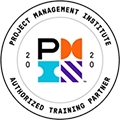Data-Driven Problem Solving and Decision Making
- Traditional Classroom: 1-day Duration
- Virtual Instructor-led: Two 3-3.5 hour sessions; Three 2-hour sessions
Making the best decisions requires more than intuition or assumptions — it requires the ability to turn data into actionable insights that drive optimal business outcomes. This interactive workshop equips analysts, managers, and decision-makers with a comprehensive toolkit for tackling business challenges. Attendees will master a proven eight-step problem-solving framework along with practical methods including root cause analysis techniques, brainstorming techniques, criteria-based decision making, and risk identification and mitigation strategies. The workshop focuses on moving beyond simply reporting numbers to uncovering insights that matter—and communicating those findings persuasively to influence stakeholders and drive action. Through hands-on exercises and a real-world case study, learners will practice defining problems clearly, collecting and analyzing the right data, and evaluating alternatives systematically.
This course is ideal for:
- Analysts and any professional responsible for interpreting and presenting data
- Leaders and managers seeking to improve data-informed decisioning skills
- Individuals across industries aiming to strengthen their analytical and problem-solving skills
- Risk, operations, program management, and risk professionals responsible for risk assessment and mitigation
- Quality and operational excellence professionals driving improvements
- Organizations aiming to define and solve business problems in a structured and repeatable manner
Learning Objectives
- Understand the importance of data for informed decision making.
- Apply an 8-Step Problem Solving approach for data-driven problem solving.
- Learn to clearly define the problem and identify root causes.
- Gain proficiency in conducting focused data collection and analysis.
- Discover how to transform analytical findings into compelling narratives that influence stakeholder decisions.
- Communicate data-driven recommendations with clarity and confidence.
- Explore how to identify, assess and mitigate risks.
- Articulate how to generate and evaluate decision alternatives using criteria-based methods.
Course Outline
Elements of Service Excellence
- Responsiveness
- Reliability
- Empathy
- Assurance
- HR Case Study Exercises
Module 1: Introduction to Data-Driven Decision Making
- Data as the Driving Force
- Maturity Levels of Data-Driven Decision Making
- Importance of Data When Making Decisions
- Biases in Decision-Making
- Overview of 8-Step Problem Solving Approach
- Exercise: Scenario — Beyond Surface-Level Information
Module 2: Defining the Problem
- Importance of Defining What You Are Solving For
- What a Problem Statement Is and Is Not
- Creating a Problem Statement
- Exercise: Review the Case Study Scenario — Create the Problem Statement
Module 3: Investigate the Root Causes of the Problem
- Definition and Importance of Root Cause Analysis
- Learn How to Brainstorm a Broad Set of Causes Using a Cause-and-Effect Diagram
- Identify the Root Causes Using the Five Whys
- Understand Best Practices When Facilitating Root Cause Analysis Events
- Exercise: Practice Using the Cause-and-Effect Diagram on a Real Scenario
Module 4: Analyze the Problem
- Translating Questions into Analytical Objectives
- Designing a Focused Analysis Approach
- Determine Required Data Needs
- Collect and Prepare Data
- Analyze patterns and Trends (Practical, Graphical, Analytical
- Present Analysis to Inform Actionable Insights
- Exercise: Case Study: Analyze Patterns and Trends To Generate Insights
Module 5: Identify Possible Solutions
- Importance of a Creative Thinking Mindset When Brainstorming Possible Solutions
- Brainstorming and Structured Ideation Techniques
- Design Thinking — Crazy 8’s Method
- Brainswarming
- Brainwriting
- Risk Assessment of Solutions
- Review the Types of Risk
- Identify Potential Risks and Impact Using a Risk Assessment Tool
- Approaches to Mitigate Risk When Solutioning
- Exercise: Hands-on Brainstorming Activity
- Exercise: Create a Risk Assessment for a given scenario
Module 6: Evaluating and Selecting the Best Solution
- DeBono’s Six Hats Technique for Decision Making
- Comparing and Evaluating Options
- Impact/ Effort Matrix
- Defining Evaluation Criteria (Cost, Benefit, Feasibility, Risk)
- Weighted Criteria-Based Matrix
- Exercise: Apply DeBono’s 6 Hats to a Real-World Decision
- Exercise: Create an Impact/Effort Matrix for a Real-World Scenario
Module 7: Implementation and Learning
- Creating Actionable Implementation Plans
- The Importance of Piloting
Module 8: Implementation and Learning
- Monitoring Results and Measuring Success
- Continuous Learning and Reflection
- Wrap Up and Q&A
BAV183 Course Code
For more information on this topic, as well as how Corporate Education Group can help power your organization’s performance, contact us via email or call 1.800.288.7246 (US only) or +1.978.649.8200. You can also use our Information Request Form!





